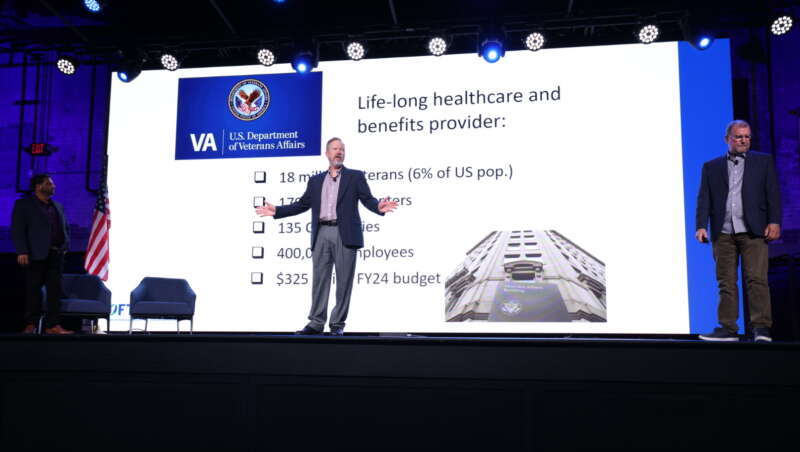
The Department of Veterans Affairs (VA) Financial Services Center (FSC) – which provides financial and accounting products and services to the VA and other Federal agencies – is utilizing AI to optimize its benefits processing and reduce operational costs.
The FSC has been working with Pega for over a decade to help accelerate its modernization journey. Notably, the agency worked with Pega to eliminate its legacy technology and develop a unified Invoice Payment Processing System (IPPS).
Srini Thummaluru, the Pega development lead at the VA’s FSC, joined the 7th annual Pega Government Empowered conference in Washington on Wednesday to explain how IPPS has helped the agency to easily sift through the over 2 million invoices it receives annually.
“With the help of Pega, we have applied more than 5,000 business rules to our application, which is automating all of the processes,” Thummaluru said.
“With the help of these business rules, we were able to cut down our processing time for almost one-third of our invoices to process them in under two minutes,” he added. “Previously, the process used to take anywhere between 15 to 20 days.”
Thummaluru said that the IPPS integrates with Business Activity Monitoring (BAM), which is an AI tool that provides predictive analysis to identify payment anomalies. The BAM helps FSC to “eliminate any improper payments or duplicate payments,” he said.
James Corry, the financial operations product manager at the VA FSC, said that since the FSC launched the BAM tool in 2019, it has “significantly improved our output.”
“It uses machine learning and AI technology to look at an individual invoice and compare it to a history of that invoice or that vendor,” Corry explained.
“Since we installed this and had it rough and running, we estimate it’s saved us about $515 million that would otherwise have to go to a recovery unit if we made the payment inappropriately and had to recover that,” Corry said. “We no longer have to do that for at least $500 million – which is a big step forward.”
William Hohorst, an IT program manager within the VA’s FSC, explained that the agency has since utilized robot process automation (RPA) for a variety of services.
For example, he said FSC uses RPA to automate the onboarding of vendors to FSC’s Financial Management System (FMS). Hohorst said this automation is only a temporary “Band-Aid for a bad process” – the Integrated Financial Accounting Management System (iFAMS) will eventually replace FMS.
The transition to iFAMS is part of the VA’s Financial Management Business Transformation (FMBT) program – which has a targeted completion date of 2030.
Nevertheless, Hohorst said iFAMS will offer a “modern” solution that “talks to other systems.” For right now, however, he said “The big benefit of all these robots is: save us money.”
“In the last year, it saved us 12 people. In total, we’re up to 24” people assigned to do other work, Hohorst said. “These people are now doing productive work. So, that’s really a big deal.”
Looking ahead, Corry said the VA is looking to use automation to meet other challenges such as security, privacy, new technologies, new features, and compliance with Section 508 of the Rehabilitation Act.
